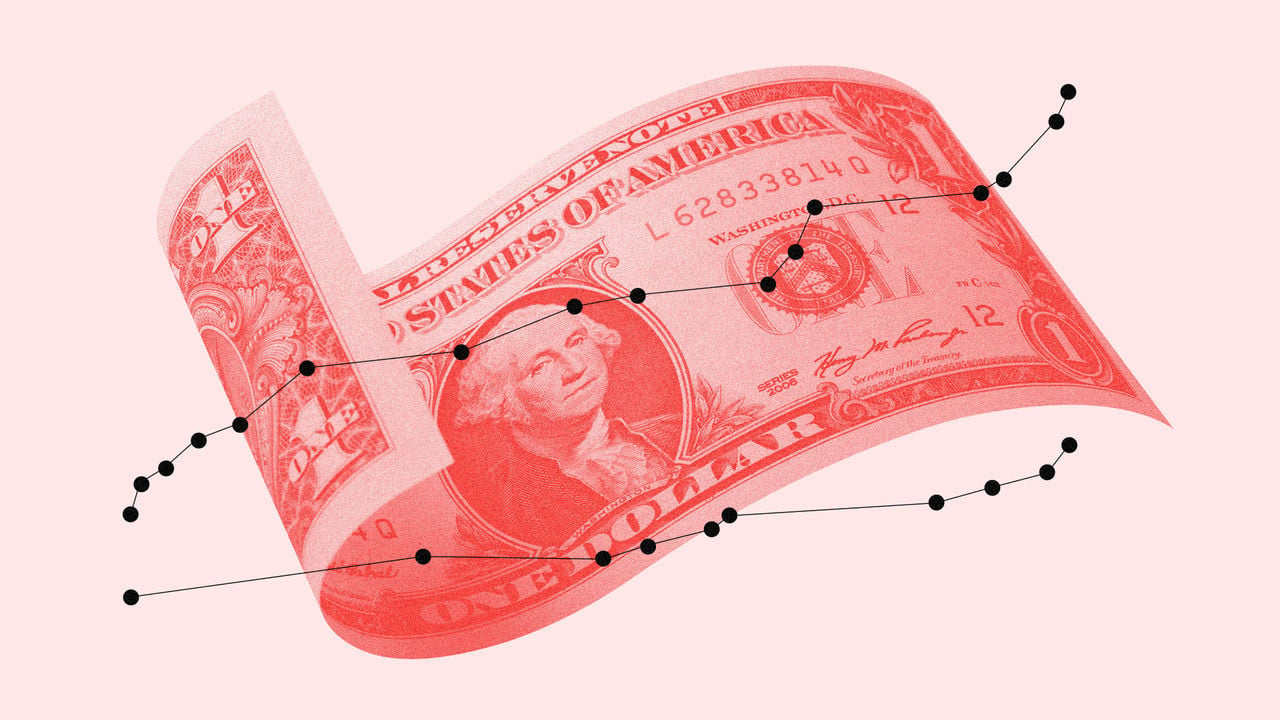Inflation is at –. The unemployment rate is –. The S&P 500 is flat
– since he took office. Last updated on July 9th 2025
Donald Trump’s second term is proving far rockier for financial markets than his first. In early April markets reeled when he announced high “reciprocal” tariffs and then rallied when he paused most of them. Investors still fear that Mr Trump’s tariffs, whatever their eventual form, will stoke inflation and depress economic growth.
Nevertheless, the labour market remains strong so far, and with inflation moderate, real incomes have risen. GDP fell in the first quarter, but the picture was complicated by a rush to import goods and build inventories before higher tariffs took effect. Yet strains are starting to show: retail sales are weakening, housing starts have dropped to their lowest since mid-2020 and an immigration crackdown is tightening labour supply.
Stockmarket
S&P 500, Jan 20th 2025=100
Since Mr Trump’s victory share prices have had a turbulent time. At first investors cheered his return. But the stockmarket fell sharply after the announcement of “Liberation Day” tariffs on April 2nd. The partial reversal of those levies has since helped prices recover, to just above where they were on election day.
Exchange rates
US dollar trade-weighted exchange rate, Jan 20th 2025=100
The greenback has depreciated sharply since March owing to fears about the impact of tariffs on economic growth. Mr Trump’s “Liberation Day” announcement in April sent it down further still before it recovered slightly towards the end of the month. Since mid-May the dollar has continued to slide, partly due to rumours that Mr Trump could name, ahead of schedule, a new chair of the Federal Reserve who favours lower interest rates. Concerns about rising government debt have added to the pressure. Meanwhile, the euro has appreciated, helped by Europe’s pledge to raise defence spending.
Bond yields
US ten-year government-bond yields, %
The yield on ten-year Treasury bonds has fluctuated since Mr Trump’s election win. It rose after polling day but fell from mid-January as investors anticipated looser monetary policy. Yields then climbed sharply amid growing concerns over the president’s fiscal plans. They have since dipped slightly.
Cryptocurrencies
Against the dollar, Jan 20th 2025=100, log scale
If one asset class was poised to outperform during the second Trump administration, it was cryptocurrencies. Mr Trump had pledged to make America “the Bitcoin superpower of the world and the crypto capital of the planet”. In March the White House established a strategic bitcoin reserve. But there were few immediate signs of a boost. Bitcoin prices fell after Mr Trump’s tariff announcements in April. Since then momentum has picked up. A trade truce with China on May 12th sent bitcoin to a record high. It remains above its level when Mr Trump took office.
Inflation
Core consumer prices, % increase on a year earlier
Economists agree that Mr Trump’s tariffs will push prices higher, though the effect has been modest so far. By May, in fact, inflation had slipped back to 2.4%, from 3% in January. But tariffs as high as 141% on some items suggest inflation will climb over time. The most exposed categories include appliances, electronics and military uniforms.
Consumer sentiment
University of Michigan Index, Q1 1966=100
Consumer confidence has tanked since Mr Trump took office. Americans are bracing for higher prices as a result of his tariff war. They also worry about losing their jobs if their employers’ costs rise. Until recently such pessimism was mainly found in Democratic-leaning parts of the country; now the gloom is evident among Republicans too.
GDP
% change on a year earlier
GDP shrank at an annualised rate of 0.5% in the first quarter of 2025, according to the latest estimate, the first decline in three years. This apparently reflected a rush to import foreign goods before Mr Trump’s tariffs took effect. But these imports also boosted consumption and inventories. In principle, the effects balance each other out. Measurement problems may explain why that didn’t happen immediately.
The unemployment rate fell in January, as hiring remained strong and wages rose. But since then job growth has slowed and the unemployment rate has slightly ticked up. Some sectors, such as manufacturing, have started cutting workers. In May the federal government cut 22,000 roles, as part of the administration’s efficiency drive. Even so, the unemployment rate remains low.■
Sources: LSEG; FRED; The Economist
